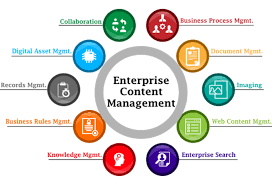The Importance of Document Content Management Systems
Document content management systems (CMS) are essential tools for businesses and organizations to efficiently store, organize, and manage their digital documents. In today’s fast-paced and information-driven world, the ability to access, share, and collaborate on documents seamlessly is crucial for productivity and success.
A document CMS provides a centralized repository for all types of documents, including text files, spreadsheets, presentations, images, and more. By storing documents in a structured manner within a CMS, organizations can easily locate specific files when needed, reducing time wasted searching through cluttered folders or email attachments.
Furthermore, document CMS platforms offer version control features that allow users to track changes made to documents over time. This ensures that the most up-to-date version of a document is always accessible and eliminates the risk of working on outdated information.
Collaboration is another key benefit of document CMS systems. Team members can work together on documents in real-time, making edits, providing feedback, and sharing ideas seamlessly. This fosters teamwork and enhances communication within an organization.
Security is also a critical aspect of document content management systems. With built-in security features such as access controls, encryption, and audit trails, CMS platforms ensure that sensitive information remains protected from unauthorized access or data breaches.
Overall, document content management systems play a vital role in streamlining document-related processes within an organization. By implementing a robust CMS solution tailored to their specific needs, businesses can improve efficiency, collaboration, security, and ultimately achieve greater success in today’s digital age.
Understanding Document Content Management Systems: Key FAQs Answered
- What is the difference between CMS and document management?
- What is document content management system?
- Is SharePoint a CMS or DMS?
- What is an example of a document management system?
What is the difference between CMS and document management?
When it comes to understanding the difference between CMS and document management, it’s important to note that while they both involve organizing and managing digital content, they serve distinct purposes. Content Management Systems (CMS) primarily focus on creating, editing, and publishing web content such as articles, blogs, and web pages. On the other hand, document management systems are designed specifically for storing, organizing, and tracking documents within an organization. While CMS platforms are ideal for managing website content and online publications, document management systems excel in handling a wide range of file types, including text documents, spreadsheets, presentations, and images. Each system serves a unique function in efficiently managing different types of digital content to meet specific organizational needs.
What is document content management system?
A document content management system (CMS) is a specialized software tool designed to efficiently store, organize, and manage digital documents within an organization. It serves as a centralized repository for various types of files, including text documents, spreadsheets, presentations, images, and more. Document CMS platforms offer features such as version control, collaboration tools, and security measures to streamline document-related processes and enhance productivity. By providing a structured framework for document storage and retrieval, a document CMS enables users to easily access, edit, share, and track changes made to documents, ultimately improving workflow efficiency and information management within a business or organization.
Is SharePoint a CMS or DMS?
SharePoint is often a subject of confusion when it comes to categorizing it as a CMS (Content Management System) or DMS (Document Management System). While SharePoint offers features that align with both categories, it is primarily considered a CMS. SharePoint excels in managing and organizing digital content, facilitating collaboration, and providing a platform for creating and sharing information within an organization. However, SharePoint also includes robust document management capabilities, such as version control, metadata tagging, and document workflows, blurring the lines between CMS and DMS functionalities. Ultimately, SharePoint’s versatility allows organizations to leverage its capabilities for various content and document management needs effectively.
What is an example of a document management system?
An example of a document management system is Microsoft SharePoint. SharePoint is a widely used platform that allows organizations to store, organize, share, and collaborate on documents and information seamlessly. With features such as version control, document workflows, access controls, and integration with other Microsoft Office applications, SharePoint provides a comprehensive solution for managing documents effectively within a business environment. Its user-friendly interface and flexibility make it a popular choice for businesses looking to streamline their document management processes and improve productivity.


Leave a Reply